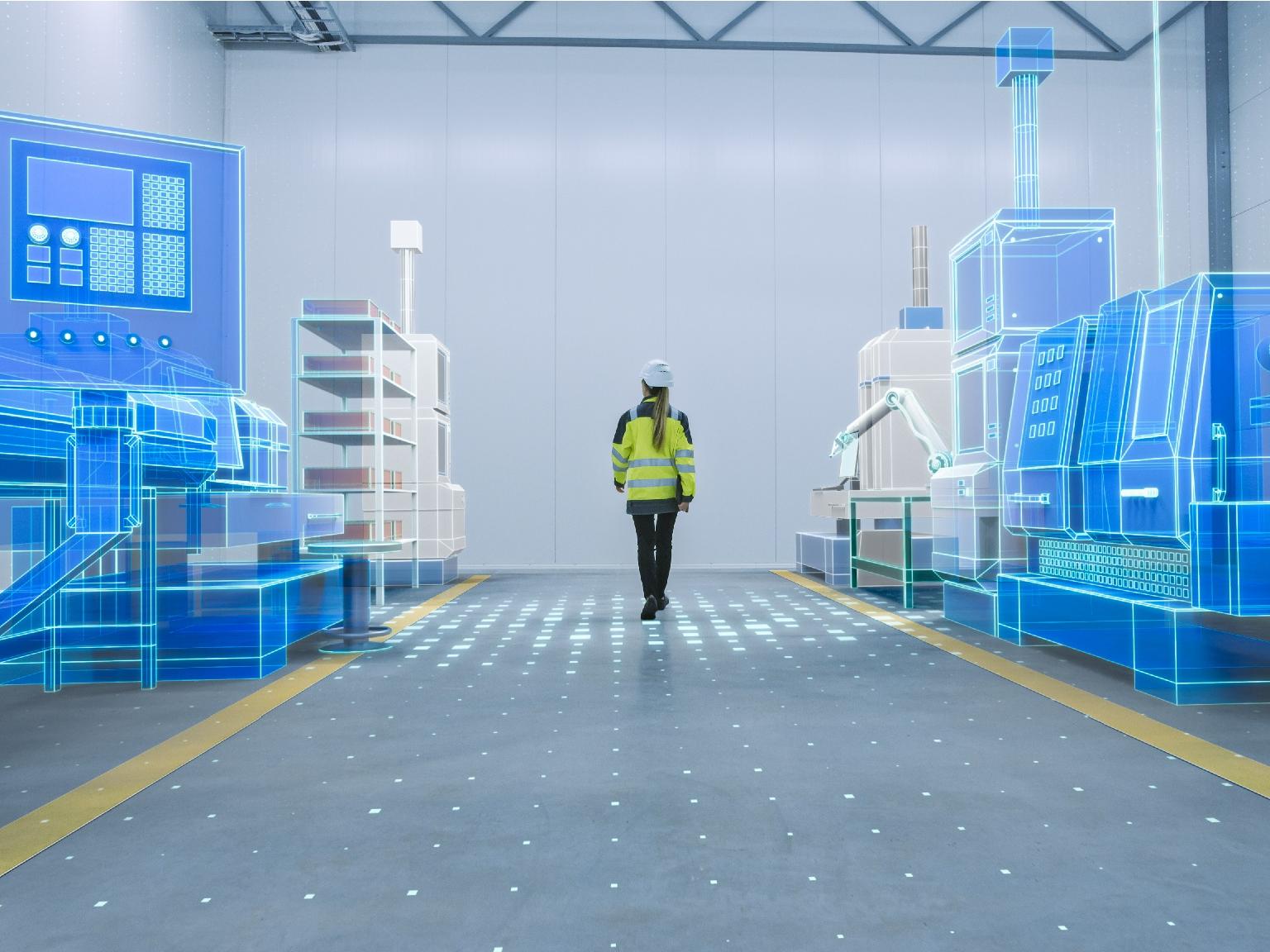
Posted to News on 19th Nov 2021, 08:57
The digitally transformed machine builder
Improved operational efficiency, lower maintenance costs and adapting to changing needs are among the many paybacks

The future of manufacturing relies on digital transformation. Here, SolutionsPT solutions manager Andy Graham, explains why it is a necessary process for any enterprise looking to remain competitive.
The benefits of digital transformation are plain to see: improved operational efficiency, reduced maintenance costs and an ability to adapt to the changing needs of customers, to name a few. But what about the OEM? What does a digitally transformed machine builder look like and what does that mean for the end user?
Digital transformation just as important for OEMs
OEMs are at the forefront of technology, a driving force behind the deployment of improved hardware and a helping hand towards improved operational efficiency for their customers. So, with end users already pursuing digital transformation, why should OEMs think about it?
Simply put, solving traditional manufacturing problems through digital technologies opens new potential revenue opportunities for machine builders – if they undertake their own transformation.
Whole new business model
Digital transformation opens the potential for OEMs to use the data their machines produce after sales, which in turn opens a way to ‘as-a-service’ ownership models for their customers. This approach can help overcome one of the biggest barriers to getting more business, the initial purchase price of a new machine, and even out the financial peaks and troughs associated with one-off sales of high value goods for the OEM. It’s worth mentioning that a more reliable rate of income also benefits OEMs in their forward planning, too.
With this business model in place, an end user now has a cost-effective way of improving overall operational efficiency through data use and, ‘as the gift that keeps on giving’, this data brings further value to the machine builder. With a real-time data stream of a machine in a real-world deployment, OEMs gain an accurate reading of their product’s health after it leaves the factory and throughout its working life.
This information goes far beyond predicted usage estimates. Machine builders can use it for developing future products, ready for the realities of industrial use. Meanwhile, the end user knows that, should any maintenance issue occur, they won’t be scrambling to reach the right person, the expert OEM will be alerted in real-time and servicing is always led by those best qualified – the machine builder.
Agnostic capabilities
Through digital transformation, everything and everyone in an industrial enterprise can be connected and this is driving the role of the OEM to undertake responsibilities traditionally reserved for systems integrators. That’s why OEMs need to view their products as part of an edge-to-enterprise system, not a standalone product. This machine needs to work as part of a complicated ecosystem that is different for every single customer.
Therefore, when OEMs are looking at the software portion of their offering, they should always look towards vendor-agnostic capabilities, ensuring the product can fit within the enterprise, whether it is a factory that still has legacy hardware or a brand new facility, and whichever vendor technologies the end user has in place.
The ability to connect to the rest of the facility is also fundamental for enabling a digital twin. As mentioned previously, both the end user and the OEM can make use of information coming out of modelling data. This means that both the machine builder and the user can see an asset’s performance based on historical data and accurately predict how it will perform in the future or in models with different operating parameters.
This can reduce design and commissioning time, and also helps enable a proactive, predictive or preventive maintenance approach, stopping downtime events before they happen.
Modular factory
A digitally transformed OEM should always seek hardware-agnostic capabilities. With connectivity in mind, OEMs can work under a modular factory approach. This is particularly relevant in a post-Covid new normal where end users need to remain agile and respond quickly to shifting customer demand. Being hardware agnostic means the machine builder can use their expertise to create the best possible solution, with the best possible hardware from any vendor or combination of vendors.
The OEM can rest easy, knowing this solution will work and integrate in an existing facility that has legacy hardware or a brand-new greenfield site. For example, if a production line is made up of five pieces of equipment from different OEMs, which is common in the sector, these machines can be joined together to create a single line. OEMs wanting to achieve this model need the right software choice that can bring together data from all sections in real-time.
Now imagine that production line has just seen a huge increase in demand. The end user can simply work with an OEM to replicate that line with a single digital thread of communication across every machine, whether the facility has equipment from one machine builder or five.
Continuously supported approach
Gone are the days of building a machine, selling it to a customer, then moving on and forgetting. OEMs need to consider this continuously supported approach to remain competitive for years to come. To do so requires becoming part of digitally transformed ecosystems and being open to adapting business practices in the light of new capabilities for end users.
Bringing the capabilities of a digitally transformed industrial enterprise into their products, OEMs can essentially package a digitalised asset and pass it on directly to their customers. Both parties see an immediate benefit, in terms of efficiency, but machine builders can use those capabilities to differentiate themselves in the crowded and competitive market.
OEMs that are agile and flexible in their offering, now and for the future, and who can integrate and connect with existing hardware, will thrive in the new normal.
Unit 1, Oakfield Road
Cheadle Royal Business Park
SK8 3GX
UNITED KINGDOM
+44 (0)161 495 4600






























